Benefits of UV Light Air Purification
Posted on by WestAIR Heating & Cooling
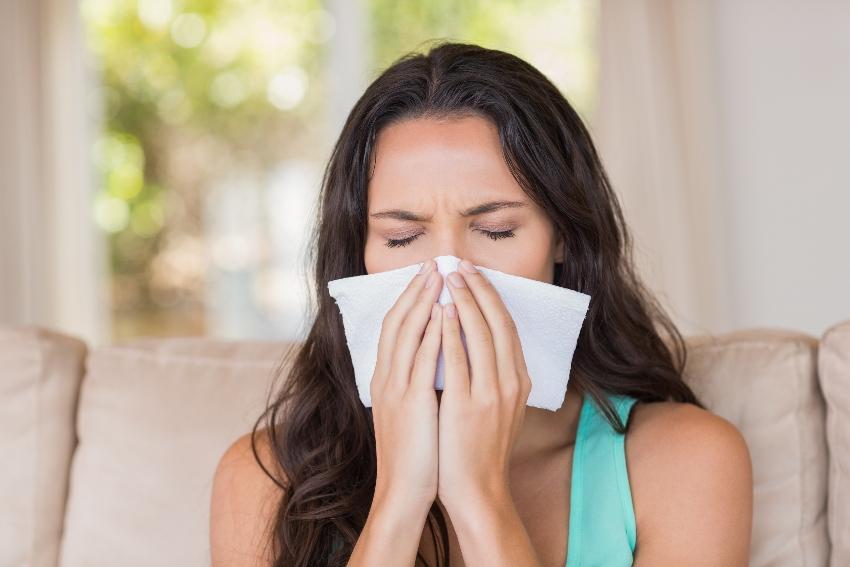
Did you know that ultraviolet (UV) light technology has been used for disinfectant purposes for over a century? While not a novel concept, the technology has grown in popularity among homeowners seeking to improve indoor air quality (IAQ). Read on to learn more about the benefits of UV light air purification.
Reduced Allergen Presence & Improved Overall Air Quality
Working in conjunction with your current HVAC system, UV lights help eliminate odors and harmful airborne pathogens. This effectively reduces the presence of allergens and improves overall IAQ.
Removes Volatile Organic Compounds
Volatile Organic compounds (VOCs) pose a health and safety hazard if breathed in, especially with prolonged exposure. While naturally occurring, they’re also found in many cleaning and disinfectant solutions, aerosol sprays, and other common household products. UV lights target and eliminate VOCs to improve IAQ and help protect your family.
Kills Mold, Bacteria, and Viruses
UV lights produce UV rays that break through an organism’s cell wall and sufficiently damage or destroy its DNA. As a result, the organism is unable to reproduce and cause illness or irritate asthma or allergy sufferers. In addition to VOCs, these rays attack other contaminants like viruses, mold, and bacteria—including odor-causing bacteria.
Better Airflow Throughout System
The air filter works to trap contaminants before they can enter the HVAC system. However, over time, dust and other debris naturally collect in the ductwork and throughout the system, forcing it to work harder. UV lights clear these buildups, improving IAQ as well as the airflow of your system.
Increased HVAC Efficiency
As mentioned, UV lights work to remove debris buildup in ductwork, as well as your HVAC system’s pipes and cooling coils. They also help reduce moisture within the system, which can help prevent condensate drain line clogs. In the end, these factors improve airflow as well as overall efficiency, resulting in decreased energy costs.
Trust WestAIR Heating & Cooling to Help Clear the Air in Your Home
Considering how much time we spend inside our homes, indoor air quality plays a vital role in our health and safety. And with cooling season right around the corner, it’s the perfect time to enjoy the benefits of UV light air purification with your HVAC system.
Contact the local HVAC experts at WestAIR to learn more and schedule service.
This entry was posted in Energy Savings,Health Tips,Indoor Air Quality,Tips and tagged Benefits of UV Light Air Purification, Clean air, Clean Indoor Air, Energy savings, How to Improve Indoor Air Quality, HVAC Efficiency, HVAC Solutions, IAQ, IAQ Solutions, Indoor air quality, Indoor air quality solutions, WestAIR Heating & Cooling
Indoor Air Quality Tips to Help You Breathe Easy This Summer
Posted on by WestAIR Heating & Cooling
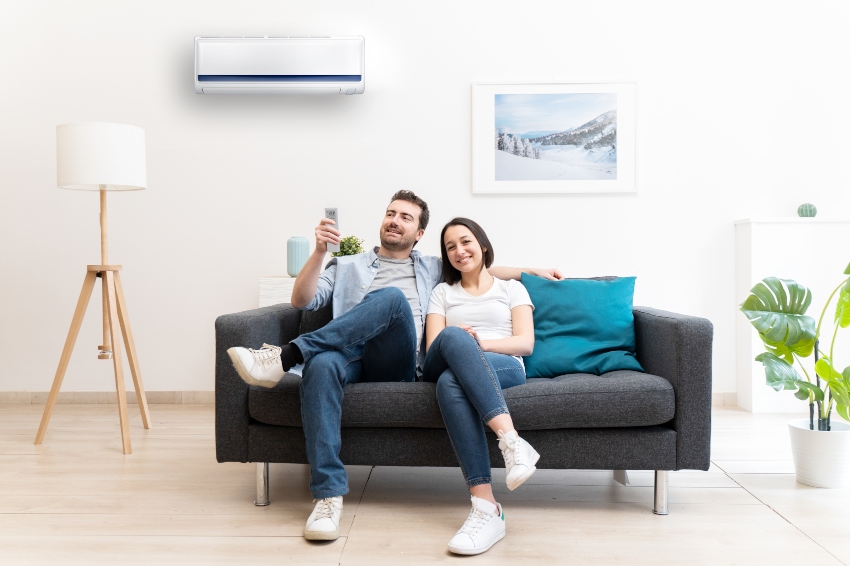
In the hottest summer months, there’s nothing quite like drinking a glass of iced tea and sitting in an air-conditioned room. But that seeming escape can actually be detrimental for your health if you have poor indoor air quality. From headaches, fatigue, and trouble concentrating to irritation of the eyes, nose, and throat, indoor air contaminants have been linked to diseases like asthma. How can you improve the air quality in your home? There are a number of available solutions. We’ve pulled a few of them together here to help you decide which one is right for you. Read on as we discuss indoor air quality tips to help you breathe easy this summer.
Air Exchangers for Fresh, Filtered Outdoor Air
Circulation is critical for good indoor air quality. Stale indoor air can become thick with contaminants and excess humidity, which can lead to mold growth. An air exchanger like the Venmar® Ventilation System, provides your home with a continuous flow of filtered outdoor air, reducing humidity and expelling pollutants from the home.
Take Air Quality a Step Further with an Air Cleaner
With an air cleaner, you can upgrade your existing heating and cooling system to help you improve the air you breathe. These systems capture airborne dust, pollen, and other particles far better than your standard furnace filter, helping eliminate pollutants in the air.
The Power of Ultraviolet Light
UV light technology can go beyond removing airborne particles to eliminating volatile organic compounds (VOCs) and reducing microorganisms. The best part? UV air purification systems like the BreatheCLEAN UV air purifier can be easily installed into existing ductwork with no major changes to your HVAC system.
If you’re looking to breathe easier, the experienced indoor air quality professionals at WestAIR are here to help. See what our customers have to say, and then contact us to schedule a service today!
This entry was posted in AC,Air Conditioning,Health Tips,Indoor Air Quality,Tips and tagged Air cleaner, Air exchanger, Importance of Indoor Air Quality, Indoor air quality, Indoor air quality solutions, Indoor Air Quality Tips, Summer, Summer Cooling, Summer HVAC, Summer HVAC Tips, Ultraviolet Light Air Purification, UV Light Air Purification, UV lights, WestAIR Heating & Cooling
7 Tips for Winter Indoor Air Quality Maintenance
Posted on by WestAIR Heating & Cooling

With the recent snowfall and chilly temps, there’s no denying that winter is almost here. Time to prepare! As heating season makes its way to Minnesota, we must remember to keep the air in our home clean as well as warm. Use this guide to winter indoor air quality maintenance to keep your family cozy, healthy, and happy throughout the season.
Poor Winter Indoor Air Quality: Causes and Effects
When cold weather hits, we seal our homes to prevent the warm air produced by our furnaces from escaping. While this helps increase comfort and energy efficiency, it also traps dust, pollen, and other airborne contaminants inside the home that then decrease indoor air quality. Common signs of poor winter indoor air quality include:
- Dry, itchy, or watery eyes
- Cold or flu symptoms: coughing, sneezing, nausea
- Heightened symptoms of asthma and other respiratory illness
- Fatigue and trouble concentrating
- Irritation of the nose and throat, particularly dryness
- Headaches
Tips for Winter Indoor Air Quality Maintenance
Escaping the bitter cold of Minnesota winters means spending more time inside our home, making clean indoor air crucial to our comfort and health. Thankfully, homeowners can improve and maintain air quality with these helpful tips.
- Clean regularly – Don’t let dust, mold spores, and other pollutants build up around the home. Dust hard surfaces and vacuum (using a vacuum with a HEPA filter if possible) at least weekly. Use non-toxic cleaners free of volatile organic compounds (VOCs), which are a major contributor to unhealthy air.
- Maintain a clean filter – Air filters keep dust and other debris from entering and harming your HVAC system, but must be maintained in order to prevent these irritants from making their way back into the air. Remember to change air filters monthly or clean if resuable.
- Schedule annual service maintenance – Ensure your heating system runs at peak performance and provides clean, warm air with professional maintenance service from a WestAIR HVAC expert.
- Have your ductwork cleaned – Dirt, dust, pet hair and dander, and other irritants settle inside your air ducts over time. Schedule duct cleaning service before winter is in full swing, and plan to do so annually.
- Enhance ventilation with an air exchanger – Sealing the home in winter leads to recycled, stale air inside. To resolve this, air exchangers deliver a continuous flow of fresh, filtered outdoor air while simultaneously exhausting unhealthy indoor air.
- Control humidity with a whole house humidifier – Humidity plays a crucial role for indoor air quality. Dry winter air can cause nose, throat, and skin discomfort, as well as damage wood fixtures and furniture over time. Installing a whole house humidifier will help maintain proper humidity levels in your home.
- Consider additional clean air solutions – Air cleaners work with your current system to remove excess dust and other irritants that decrease indoor air quality. Ultraviolet (UV) light purification systems utilize UV rays to eliminate odors harmful airborne pathogens like viruses, bacteria, mold, and VOCs.
This year has presented us all with new and unique challenges. But no matter how unpredictable 2020 has been, we know we can always plan for harsh winter weather here in Minnesota. We’re already seeing the temps drop and snow fall, so don’t wait! Use these winter indoor air quality maintenance tips to enjoy clean, comfy air inside your home this heating season.
For all your heating and cooling needs, trust the HVAC experts at WestAIR. Contact us today to learn more.
This entry was posted in Duct Cleaning,Furnace,Health Tips,Heating,Humidifier,Humidity,HVAC Maintenance,Indoor Air Quality,Tips,Winter and tagged Air cleaner, Air exchanger, Duct cleaning, Duct cleaning service, Heating, Heating Tips, Humidfier, Humidity, Humidity Management, HVAC tips, Indoor air quality, Indoor air quality solutions, Professional duct cleaning, Residential HVAC, Ventilation, WestAIR Heating & Cooling, Winter, Winter HVAC, Winter HVAC Tips, Winter Indoor Air Quality, Winter Indoor Air Quality Maintenance, Winter Tips, Winterize
Importance of Indoor Air Quality
Posted on by WestAIR Heating & Cooling
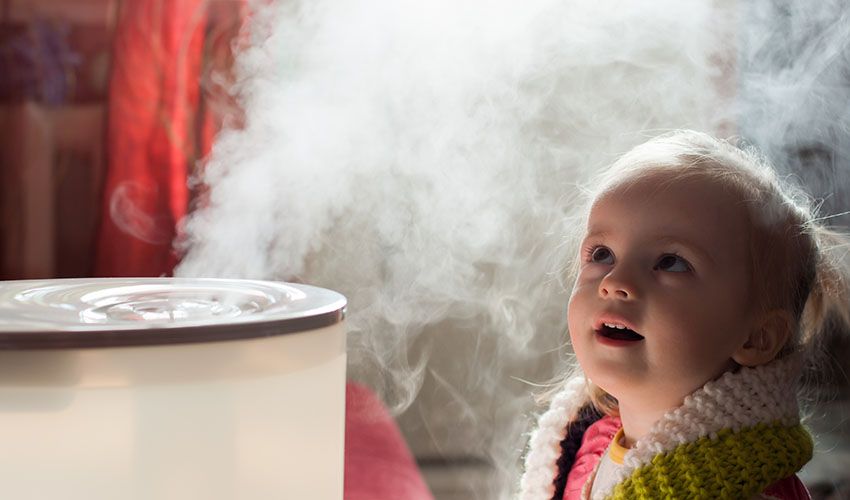
When we think about pollutants, many of us jump to an image of factories pumping smoke and toxins into the air. But what about on a smaller, more personal scale? Most of us spend more time in our own home than anywhere else, yet fail to consider the potential harm we face there. Let’s look at the importance of indoor air quality for family health.
Why Indoor Air Quality Matters
According to the EPA, the concentrations of pollutants in indoors are often two to three times what they typically are outdoors. Additionally, the EPA says that on average, Americans spend about 90 percent of their time indoors, with people who are more susceptible to pollution’s adverse effects (including children, older adults, and those with cardiovascular or respiratory disease) spending even more.
Causes/Sources
When it comes to indoor pollutants, most people are aware of secondhand smoke, radon, and carbon monoxide. Other threats to indoor air quality include:
- Combustion sources like wood, coal, and gas heating and cooking appliances
- Cleaning supplies releasing different chemicals into the air
- Building materials like insulation and pressed wood
- HVAC systems, especially if improperly maintained
- Pet hair, dander, and other allergens
- Inadequate ventilation
- Dust mites and pests
- Mold and bacteria
Outdoor air pollutants can also make their way inside the home through open doors and windows, ventilation systems, and cracks and seams. Chimney smoke can reenter and pollute the air, and volatile chemicals can sometimes enter via the water supply when cooking or showering. By simply entering the home, people inadvertently bring the soil and dust particles attached to their clothing along with them, as well as any pollutants attached to those particles.
Effects
The effects of indoor air pollutants vary both by person and based on length of exposure. Some immediate, short-term effects include:
- Irritation of the eyes, nose, and throat
- Coughing and sneezing
- Headaches, dizziness, and fatigue
- Upper respiratory congestion
- Triggered or worsening asthma symptoms, including asthma attacks
Long-term and more severe health effects include:
- Respiratory disease, heart disease, and cancer
- Nausea and vomiting
- Fever and chills
- Myalgia (muscle pain)
- Nose bleeds
- Difficult or painful breathing
If you experience any of these symptoms, contact your healthcare professional or dial 9-1-1 in case of emergency. Consult your local HVAC professional about improving your home’s air quality.
Tips
Whether we’re escaping hot and humid summer days or the bitter cold of winter, Minnesota residents spend plenty of time indoors year-round. Maintaining clean indoor air is crucial, and here are a few basic tips to get you started:
- Let in fresh air: Open windows and doors when possible and consider purchasing an air exchanger to help replace stale indoor air with during the winter.
- Clean regularly: Vacuum carpets and rugs one to two times each week and dust hard surfaces weekly.
- Wash bedding weekly and consider using dust mite-proof covers on pillows, mattresses, and box springs.
- Have your ductwork cleaned and change your filter (or clean if re-usable) monthly.
- Invest in an air cleaner to efficiently trap and remove airborne pollutants.
- Declutter your living space to avoid trapping and holding dust.
WestAIR Heating & Cooling understands the importance of indoor air quality, and we want to help keep your family safe and healthy. We offer professional duct cleaning as well as sale and service of air exchangers, air cleaners, whole house humidifiers, and replacement filters.Contact us to learn more and schedule service today.
This entry was posted in Duct Cleaning,Health Tips,Indoor Air Quality,Tips and tagged Effects of Indoor Air Pollutants, Effects of Indoor Air Quality, Effects of Poor Indoor Air Quality, Family Health, Family Safety, Heating, Heating System, Home Heating, Home Safety, Homeowner Education, Homeowner Tips, HVAC Safety, Importance of Indoor Air Quality, Indoor air, Indoor Air Pollutants, Indoor air quality, Indoor air quality solutions, Indoor Air Quality Tips, Winter
Surprising Ways to Reduce Humidity in Your Home
Posted on by WestAIR Heating & Cooling
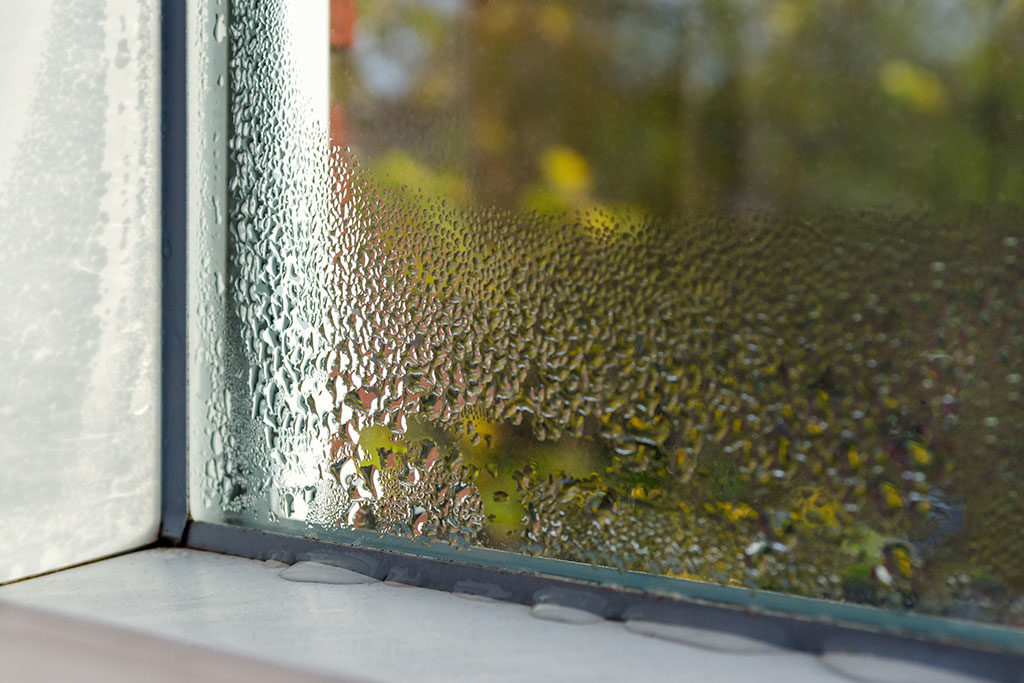
If you’ve been noticing foggy windows, musty odors, or clammy air throughout your home, chances are, your humidity levels are high. Humidity can both rob you of comfort and threaten your health. We don’t want you to suffer through the stifling heat, so we’ve outlined some surprising ways to reduce humidity in your home.
But first, a word about relative humidity (RH): RH measures water vapor relative to the temperature of the air. RH illustrates the amount of water in the air in relation to the total amount of humidity that could be held at the current temperature. Weather forecasts report relative humidity because it affects how we feel the temperature. Humid air feels warmer; dry air feels cooler. The ideal indoor relative humidity for a home is between 40 and 60 percent. If your RH is lower or higher, follow these tips:
Go old school with laundry
Dry your clothing outside. If you hang wet clothing inside to dry, all the moisture will evaporate into the air.
Accessorize with plants
Invest in some household tropical plants like Boston ferns, English ivies, Peace lilies, Reed Palms, or Tillandsias. These plants absorb moisture from the air instead of through the roots.
Take cold(er) showers
Hot showers create steam. Plan to bathe after exercising or spending time outside in the heat. You’ll be less tempted to jump into a steaming shower, and the cool water will feel refreshing. If nothing else, run the exhaust fan during and after showering.
Eat more salads
Hot weather provides the perfect opportunity to cook outside on the grill or eat cold meals like salads and sandwiches. Avoid boiling water; instead, save the heavy pasta for cooler weather. Your body will thank you in more ways than one.
Check the drainage route
In high humidity, your air conditioner or dehumidifier will produce a lot of condensation that has to go somewhere. Regularly empty the drip pan and be sure the drain lines are working properly so the water doesn’t evaporate back into the air.
Replace your flooring
Carpet is known to retain moisture. If you’ve tried all the above methods to decrease humidity, but still have a problem with moisture, consider replacing the carpet with hardwood flooring.
Benefits of proper humidity
With lower humidity levels, you could raise the thermostat setting a few degrees and still be comfortable. High humidity may cause headaches and asthma symptoms such as wheezing, shortness of breath, or a chronic cough. Proper humidity levels are easier on your respiratory tract and can:
- Reduce your cooling costs.
- Minimize wear on your HVAC system.
- Prevent dust mites, mold, bacteria, and mildew.
- Eliminate foul odors.
- Help you sleep better.
If you are still having trouble, consult with the professionals at WestAIR Heating & Cooling. We offer high-efficiency air conditioners to keep you cool in the muggy season and countless air quality accessories to reduce humidity. Schedule service to have a technician visit your home and recommend the right solutions for your family’s total indoor air comfort.
Contact us for more information.
This entry was posted in Air Conditioning,Cooling,Health Tips,Indoor Air Quality,Tips and tagged Air quality accessories, Asthma, Comfortable, Cooling, Dehumidifier, Energy efficiency, Energy savings, Grilling out, Humidity, HVAC, HVAC tips, Indoor air, Indoor air quality, Indoor air quality solutions, Muggy season
Indoor Air Quality Solutions
Posted on by WestAIR Heating & Cooling

Ever looked at a ray of light streaming through your windows and noticed floating dust particles? The sunlight can reveal a lot about a room’s air quality. While it may be tempting to open up the windows and doors for a quick fix, we’re in the thick of ragweed season, so it probably won’t do you any favors. The EPA recommends upgrading your HVAC filter or using an air cleaner to reduce harmful airborne particles. Read our blog to learn why and discover some more indoor air quality solutions.
New filters
Your HVAC filter traps microorganisms, animal fur, hair, lint, dander, mold, pollen, dirt, and more so they don’t accumulate in your system or irritate your lungs. Check your filter once a month to see if it needs replacing. A clogged air filter can cause your HVAC equipment to overheat, short cycle, or even break down. At the very least, changing a dirty filter could lower your energy bills because your system won’t have to work twice as hard just to obtain adequate airflow.
Air cleaner
An air cleaner uses a filter to trap particles like bacteria, mold, ragweed, pet dander, and dust mites. It can even eliminate viruses, kill germs, neutralize fumes, and remove odors. Those with allergies, asthma, or sensitivity to chemicals can benefit from an air cleaner, which can remove up to 97 percent of pollen-sized particles.
Air exchanger
Every time you cook, shower, clean, and breathe, you release pollutants into the air. Airtight buildings are more energy efficient, but they need to somehow circulate air to maintain a healthy environment. Without adequate ventilation, old air will sit in enclosed spaces and accumulate dust, bacteria, mold, and other harmful particles.
An air exchanger provides refreshed, filtered air to reduce these allergens. Air exchangers use two fans, one to take stale air out, and the other to pull in fresh air, run it through a filter, and disperse it through the ductwork.
Dehumidifier
Humidity makes a room seem hotter than it is and increases the likelihood of mold and mildew growth. Drier air feels cooler. A dehumidifier can increase your comfort and allow you to raise the temperature a few degrees to save on cooling expenses. You can use a portable unit or install a whole house dehumidifier that works in conjunction with your HVAC system.
Dehumidifiers pull moist air over a cooling coil that condenses the moisture vapor into droplets. Moisture along the coils drips into a collection pan or directly down a drain.
Duct cleaning
In most HVAC systems, all the conditioned air passes through ductwork to supply vents in each room, and back through return registers to be conditioned again. Particles floating in the air could become trapped in the many channels and crevices behind your walls. If the ductwork is dirty, your indoor air will be, too, no matter what air cleaning accessories you install. During air duct cleaning, your technician will use powerful vacuums and brushes to dislodge debris and allow proper airflow.
Bonus tip
Plants clean the air of carbon dioxide and can remove cancer-causing formaldehyde, benzene, and other toxins. If you are looking for an inexpensive way to purify your indoor air, bring in some potted vegetation. They can improve your physical health as well as your mental well-being by reducing stress, building memory retention, and increasing concentration, which in turn boosts productivity.
At WestAIR, we care about you and your family’s health and comfort. We offer air quality solutions to rid your home or business of harmful pollutants and provide fresh oxygen, day in, and day out.
Contact us to learn more.
This entry was posted in Duct Cleaning,Indoor Air Quality,Tips and tagged Air circulation, Air cleaner, Air filters, Allergies, Asthma, Clean HVAC ducts, Comfortable, Cooling, Energy efficiency, Energy savings, Humidity, HVAC, HVAC tips, Indoor air quality, Indoor air quality solutions
Top Tips for Summer Cooling
Posted on by WestAIR Heating & Cooling
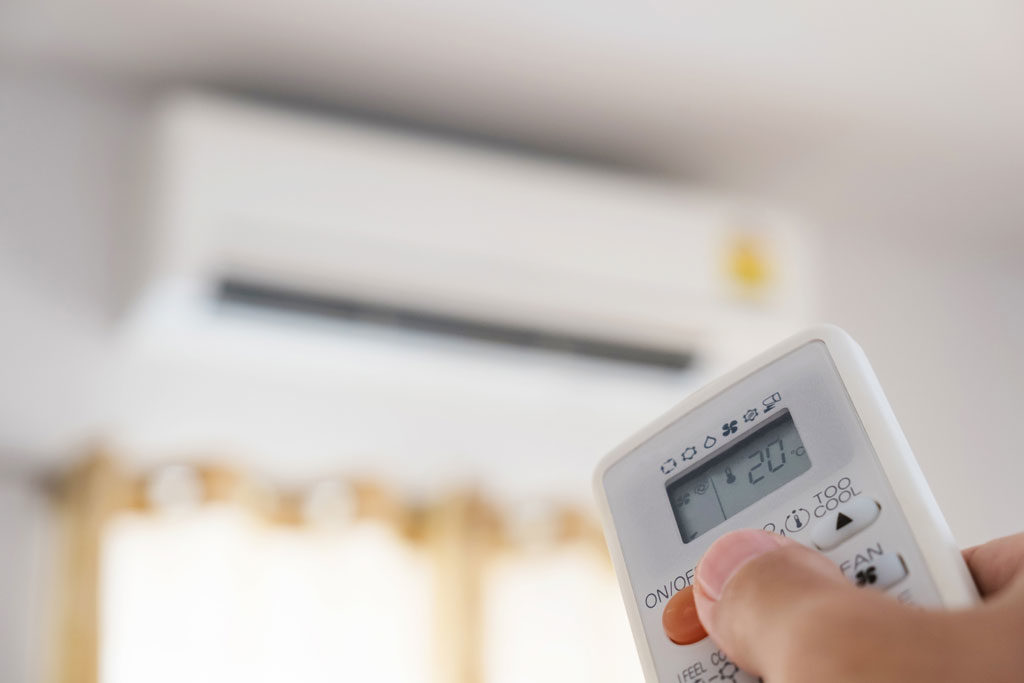
Warm weather is great for barbecues, days at the beach, and evening campfires, but not so great on your home’s cooling system. Some homeowners fight the urge to turn on their air conditioning, and others let it run, dreading their summer utility bills. Thankfully, there are options that will save you from the heat, give you peace of mind, and treat your pockets kindly. Here are some top tips for summer cooling:
Protect your home and equipment
Weatherizing your home isn’t just for winter. An air-tight system will save you money on cooling. Caulk your windows and doors so the cool air your system produces won’t escape. Up to 30 percent of home heat in the summer comes in through the windows. Use blinds, curtains, and drapes to block out the sun and keep daytime heat out.
Schedule maintenance with a qualified technician before the heat of summer. If you regularly service your HVAC equipment, it’ll last longer and run more efficiently. Proper DIY maintenance like keeping your outdoor unit clear of debris and regularly dusting your home will ensure dirt and dust don’t infiltrate your system and ruin your equipment. Check your filter once a month and replace as needed. If your air filter collects dust and debris, airflow will be restricted, and your unit will have to work harder.
Distribute air
Close off any unused rooms so you are only cooling the areas you use frequently, but make sure the rest of your home is well ventilated. Check that your supply and return registers aren’t blocked by furniture. Flip the switch on the motor housing of your ceiling fans to summer mode (counterclockwise). The blades will push the air straight down and create a wind-chill effect. Turn off your cooling system and open your windows in the evening to save money and provide your home with fresh air. Consider other indoor air quality solutions like an air exchanger or cleaner.
Avoid heat-producing appliances
Appliances that use heat can waste the cold air your cooling system produces. Instead of cooking in your oven, enjoy the outdoors by grilling more often. Air-dry your dishes and laundry instead of using the dishwasher and dryer. Take cool showers so your water heater won’t have to run as often. In addition, keep heat-producing appliances away from your thermostat so it reads the temperature accurately and doesn’t overcompensate.
If you’re still using incandescent light bulbs, replace them with LED lights. Incandescent bulbs create light by using electricity to heat up a filament until it glows. Ninety percent of the energy used to light up the filament is wasted on heat. LEDs create light through a cold process, producing little amounts of heat in comparison.
Take advantage of technology
According to the EPA, when used properly, a programmable thermostat can save you up to $180 a year in energy costs. With a programmable thermostat, you can set the temperature of your home higher when you leave for work or a trip and lower it shortly before you return.
Replace your old unit with a more efficient system. It may be more expensive up front, but a new air conditioner with a high SEER rating can give you maximum energy savings and reduce your carbon footprint. You’ll also enjoy peace of mind knowing your unit won’t likely break down on the hottest days of summer.
WestAIR Heating & Cooling provides energy-efficient Rheem A/C units, smart thermostats, filters, and other cooling solutions. We offer annual service maintenance and a variety of specials so you can save money and keep your HVAC system running smoothly. Contact us to learn more.
This entry was posted in AC,Air Conditioning,Cooling,Energy Savings and tagged A/C, A/C tune-up, Air circulation, Air cleaner, air conditioning, Air filters, Comfortable, Cooling, Cooling system, Energy efficiency, Energy savings, Grilling out, Hot days, HVAC, Indoor air quality, Indoor air quality solutions, Window curtains
Spring HVAC Checklist
Posted on by WestAIR Heating & Cooling

Some of the most pressing concerns for Minnesota homeowners are humidity levels, poor air quality, and increased utility bills. In the spring, those HVAC issues are a hot topic as the warm weather approaches. Follow our spring HVAC checklist to inspect and prepare your equipment for summer.
- Turn off power to your outdoor unit from the electrical disconnect and clear away plants, weeds, fallen leaves, and branches. Use a garden hose to gently rinse off the condenser coils. If the unit doesn’t get enough air or the coils are covered in dirt, it could overheat.
- Change your filter, and plan to do so monthly when your furnace and air conditioning are in use. Filters keep dust and dirt from entering your system, extend equipment life, reduce energy costs, and improve indoor air quality.
- Clean return air vents and floor registers in your home with a vacuum. If dust gets in the system, it could compromise energy efficiency and air quality. For a deeper clean, remove the vent, wrap a butter knife in a rag to scrub the individual grill spaces, and rinse with warm water and soap.
- Check the batteries in your carbon monoxide detector(s) and replace if needed so you know it is working properly to keep your family safe.
- Caulk windows and doors to minimize air leakage so the cool air your system produces isn’t wasted. According to the U.S. Department of Energy, the best time to apply caulk is in low humidity when the temperature is about 45 degrees, making spring the ideal time for this simple maintenance.
- Dust and mop so dirt, allergens, and other airborne particles don’t end up in your ductwork. Schedule duct cleaning if you haven’t done so in a while or you suspect your ductwork is dirty.
- Clean windows, blinds, and curtains so you can let the sunlight into your home and enjoy a clear view of the outdoors without producing a cloud of dust each time you open them.
- Dust ceiling fan blades and reverse their direction to rotate counterclockwise so they’ll blow air straight down and produce a wind-chill effect. Most fan models have a small switch on the motor housing.
- Power up your air conditioning to see if everything is working properly. You should visually inspect the unit for any leaking chemical fluids and check your home for burning, gas, or musty odors.
- Schedule service with your HVAC contractor for a thorough inspection. They’ll clean, lubricate, and troubleshoot your equipment so it will run smoothly and efficiently.
Midwest summers can be particularly hot and sticky, and homeowners can spend up to 250 dollars a month running their air conditioner. WestAIR Heating & Cooling is here to help you save money in every season with a variety of specials on our services. We also provide indoor air quality solutions so you can minimize spring allergies and live comfortably. If you are having trouble with your HVAC system, contact us for repair and replacement services.
This entry was posted in Air Conditioning,Duct Cleaning,Indoor Air Quality,Repairs,Spring and tagged A/C, air conditioning, Allergies, Asthma, Clean HVAC ducts, Cooling, Duct cleaning, Dust, Energy savings, Hot weather, Humidity, HVAC, HVAC checklist, Indoor air, Indoor air quality, Indoor air quality solutions, Indoor humidity
Subscribe to Our Blog
With RSS feeds, you don't have to visit our site everyday to keep up to date. Simply subscribe to our blog via RSS or Email and our posts will come to you!
Search Blog Posts
Categories
Archives
- April 2024 (1)
- February 2024 (1)
- January 2024 (1)
- February 2023 (1)
- January 2023 (1)
- December 2022 (1)
- November 2022 (1)
- October 2022 (1)
- September 2022 (1)
- August 2022 (1)
- July 2022 (1)
- June 2022 (1)
- May 2022 (1)
- April 2022 (1)
- March 2022 (1)
- February 2022 (2)
- December 2021 (1)
- November 2021 (1)
- October 2021 (1)
- September 2021 (1)
- August 2021 (1)
- July 2021 (1)
- June 2021 (1)
- May 2021 (1)
- April 2021 (1)
- March 2021 (2)
- January 2021 (1)
- December 2020 (1)
- November 2020 (1)
- October 2020 (1)
- September 2020 (1)
- August 2020 (1)
- July 2020 (1)
- June 2020 (1)
- May 2020 (1)
- April 2020 (1)
- March 2020 (1)
- February 2020 (2)
- November 2019 (1)
- August 2019 (2)
- June 2019 (1)
- May 2019 (1)
- April 2019 (1)
- March 2019 (1)
- February 2019 (1)
- January 2019 (1)
- December 2018 (1)
- November 2018 (1)
- October 2018 (1)
- September 2018 (1)
- August 2018 (2)
- July 2018 (1)
- May 2018 (1)
- April 2018 (1)
- March 2018 (1)
- February 2018 (1)
- January 2018 (1)
- December 2017 (3)
- November 2017 (2)
- October 2017 (2)
- September 2017 (2)
- August 2017 (1)
- July 2017 (2)
- June 2017 (3)
- May 2017 (2)
- January 2017 (4)
- November 2016 (1)
- September 2016 (3)
- July 2016 (2)
- June 2016 (2)
- May 2016 (4)
- April 2016 (1)
- March 2016 (2)
- February 2016 (2)
- January 2016 (1)
- August 2015 (1)
- July 2015 (1)
- June 2015 (3)
- May 2015 (1)
- July 2014 (2)
- June 2014 (1)
- April 2014 (1)
- March 2014 (1)
- February 2014 (2)
- October 2013 (1)
- May 2013 (1)
- March 2013 (1)
- February 2013 (1)
- August 2012 (1)
- July 2012 (2)
- June 2012 (2)
- May 2012 (2)
- March 2012 (1)
- February 2012 (1)
- December 2011 (1)
- November 2011 (1)
- October 2011 (1)
- September 2011 (1)
- August 2011 (1)
- June 2011 (1)
- May 2011 (1)
 Subscribe
Subscribe Subscribe
Subscribe